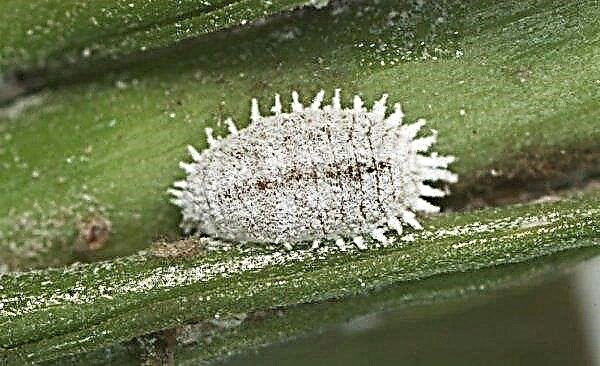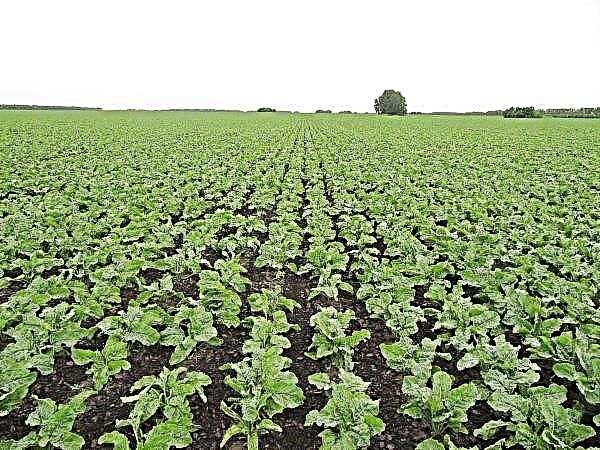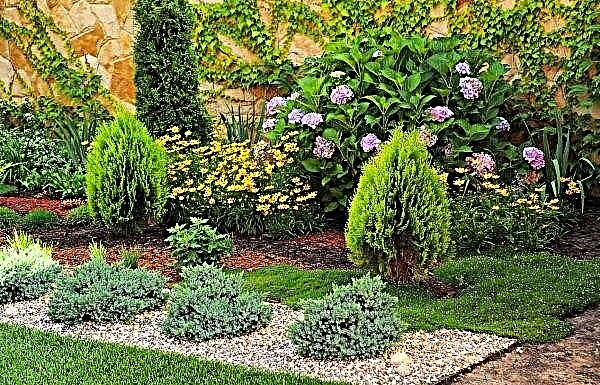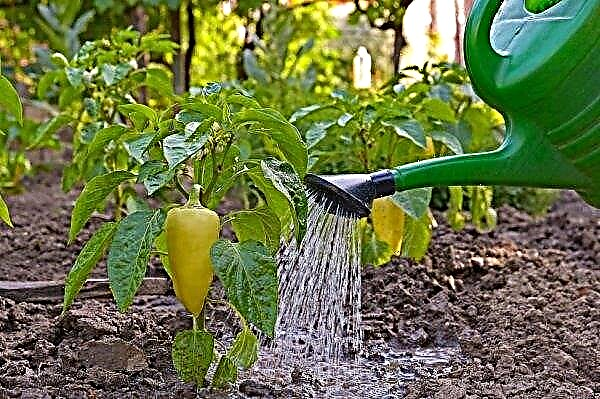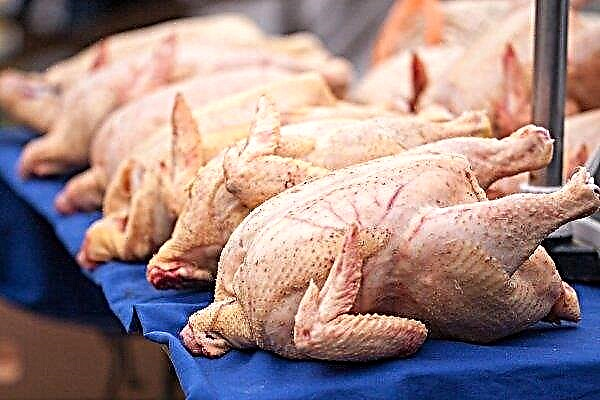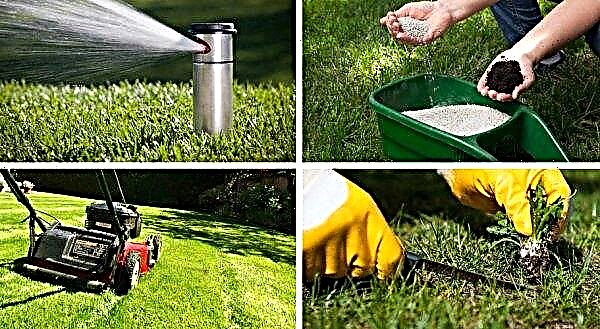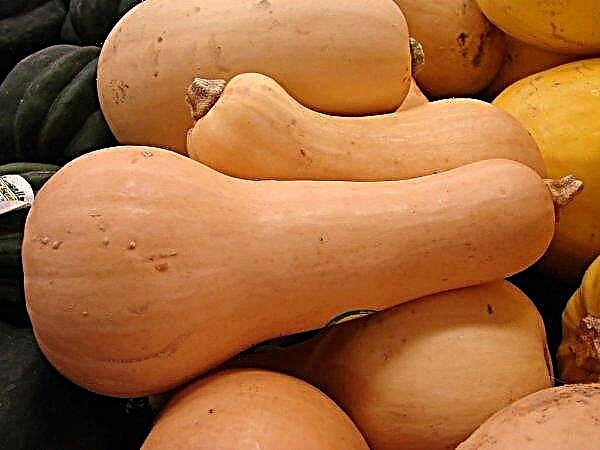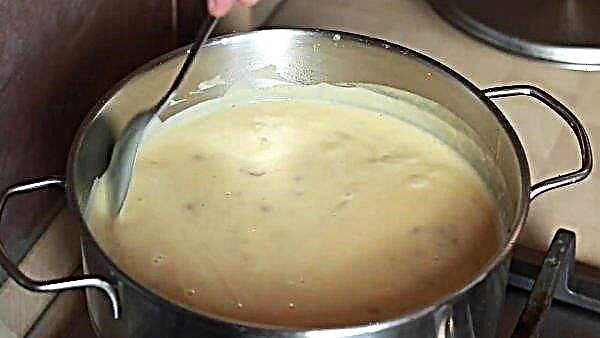This tomato variety has received widespread recognition due to its undeniable advantages in the form of high taste, versatility of application, unpretentiousness in growing and resistance to most diseases. Read more about the tomato variety Benito f1 read further in the article.
History and characteristics of the variety
This variety, existing for more than a quarter of a century, has managed to show its best qualities in many regions of Europe, Siberia and the Far East.
Selection
The Benito f1 tomato hybrid was bred at the end of the last century in Holland. The originator of the variety is the Dutch company Bejo Zaden. In Russia, this variety was registered in 2000 by the Federal State Budgetary Institution “State Commission for the Volga-Vyatka, Central Chernozem, East Siberian and Far Eastern regions for cultivation in open ground.
Did you know? Tomatoes, among other things, are able to calm the nervous system, acting under stress as antidepressants.
Botanical Description
In the botanical plan, the Benito tomato variety is characterized by:
- a determinant bush up to 0.6 m high;
- early maturity;
- the growing season from the first sprouts to harvest from 94 to 112 days;
- large and drooping leaf plates;
- brushes containing up to 9 plum-shaped fruits;
- bright red color of tomatoes;
- the average weight of the fruit is from 45 to 75 g with a maximum weight of up to 100 g;
- dense pulp;
- low number of seeds;
- elastic skin;
- characteristic tomato taste of pulp;
- high productivity of up to 25 kg per 1 m²;
- good keeping quality of fruits;
- their transportability;
- universality of application.

Advantages and disadvantages
- Based on the above, the advantages of the Benito variety include:
- excellent presentation of fruits;
- their high taste;
- the universality of their use in fresh and canned forms, as well as in juice;
- stunted bush, not requiring a garter;
- ease of plant care;
- compact bush and lack of need for pinching;
- good preservation of tomatoes and the ability to quickly ripen in room conditions;
- resistance to fusarium, mosaic and verticillosis;
- undemanding to bright lighting;
- the ability of the fruit to not crack during heat treatment. What contributes to the full-fledged canning of tomatoes.
The tomato varieties of the determinant type also include:
Vegetable growers do not note major shortcomings in the Benito variety.
- Some problems cause:
- the inability of this hybrid at home to produce seeds suitable for further cultivation of the variety, as a result of which each time it is necessary to purchase seeds from specialized outlets;
- lack of resistance to diseases with apical rot and columnar.
How to grow tomato seedlings yourself
Growing seedlings of Benito tomato at home in the presence of quality seeds does not present any special difficulties.
Sowing time
The optimal time for sowing seeds depends on the climatic conditions of a particular region, based on the fact that, on average, from 94 to 112 days pass from germination of sprouts to the time of fruit ripening. Most often, the best time to sow seeds of this tomato variety occurs in the first half of March.
Soil mix
It is best to use a professionally prepared substrate for sowing seeds, which can be purchased at specialized retail outlets. But it is quite possible to make a high-quality soil mixture with your own forces from turf soil and compost, taken in equal shares.

The resulting substrate must be decontaminated by half-hour heating in the oven, after which the soil mixture can be used after 14 days. In addition to this procedure, the soil mixture can be treated with the same purpose using a 3% manganese solution.
Capacity for growing
To fill the substrate, containers are usually used in the form of:
- wooden or plastic low boxes;
- glasses made of plastic, cardboard or peat;
- plastic sowing containers.
Seed preparation
Since almost all Benito tomato seeds are purchased in specialized stores, this seed does not require disinfection at home, as it has already undergone pre-sale disinfection. If the seeds at the same time reveal a colored shell on themselves, then they should not be treated with germination stimulants. Otherwise, it is useful to soak the seed material for a short time in special stimulants or just in aloe juice.
Important! Vegetable growers recommend that the seeds untreated by the factory method with a nutritious mixture be soaked in warm water for 48 hours to stimulate their germination.
Sowing seeds
Tanks up to 0.15 m high are filled with a moist substrate. If the sprouts are intended for picking, then the seeds are sown in boxes at a distance of 2 cm from each other. At the same time, the depth of seed penetration into the soil is 2 cm. After sowing the seeds and lightly pouring with warm water, the containers are covered with glass or a transparent film, creating a greenhouse effect.
Seedling Care
Tanks covered with a transparent material are placed in a warm place with a daily temperature of at least + 25 ° С. At night, the ambient temperature can drop to + 17 ° C. As the soil dries, it is moistened with a spray gun, trying to prevent moisture from entering the plant. After seed germination, the coating is removed. With this seedling, good lighting is required for half a day. It is useful to feed the sprouts with complex fertilizers.

For want of ready-made, top dressing can be done with a mixture of:
- 1 liter of water;
- 2 g of ammonium nitrate;
- 2 g of potassium sulfate;
- 2 g of double superphosphate.
As the second pair of leaves appears on the shoots, the seedlings growing in the boxes will dive. It should be buried in a substrate to cotyledon leaves, while laying the stem in an inclined position to increase the root system.
Seedling hardening
About 2 weeks before transplanting seedlings to a permanent place, they begin to harden them. To do this, they take it to fresh air. At first, this is done literally in a few minutes. Gradually, the time spent by the seedlings on the street is lengthened so that on the eve of planting it in the open ground, it would already spend at least a whole day in the fresh air.
Did you know? If heat treatment does not worsen, but, on the contrary, improves the beneficial properties of tomatoes, then the cold acts in the opposite way. Therefore, tomato fruits are not recommended to be stored in the refrigerator.
Planting seedlings in a permanent place
In order to properly plant seedlings in a permanent place, several conditions must be met.
The timing
The optimal timing of planting seedlings at a permanent place is determined by the climatic and weather conditions of a particular place. Usually, the time for planting seedlings in open ground is between the second half of May and the first half of June. In this case, the age of tomato seedlings should be from 55 to 60 days, and the temperature of the soil should not fall below + 13 ° C.
Seat selection
Soil for planting seedlings should be prepared in the fall, digging up the site and enriching it with organic fertilizers, represented by mullein or bird droppings and applied in the amount of 7 kg per m².

In the spring, immediately before planting seedlings in the soil, it is enriched with a mixture of such fertilizers:
- 30 g potash;
- 40 g of phosphoric;
- 30 g of nitrogen.
Benito's tomato variety is not as demanding on lighting as many other tomato varieties. But he just as badly tolerates the strong windiness on the site. It is very important for the good growth of this variety that which predecessors grew before in this area. The quality of the neighborhood is also very important, that is, what other plants are located next to the tomato beds.
Tomatoes feel very good on the ground, where previously the plants represented:
Recommended Reading

- beetroot;
- turnips;
- pumpkin;
- carrots;
- radish;
- parsley;
- watermelons;
- zucchini;
- corn
- peas;
- celery;
- cabbage.
During their growth, tomatoes feel great if they grow next to their beds:
- radish;
- beet;
- carrot;
- cabbage;
- salad;
- garlic;
- bow;
- bush beans;
- radish;
- basil;
- calendula;
- corn;
- spinach;
- asparagus;
- parsley.
But in no case should you plant tomato seedlings in the place where solanaceous crops previously grew in the form of:
- potatoes;
- eggplant;
- pepper;
- physalis.
Important! Tomato plants should not be planted for more than 3 consecutive years in the same place.
Landing pattern
Wells for planting are dug in advance to a depth slightly higher than the height of peat cups or earth clods if the seedlings are removed from plastic containers. They are located in such a way that on 1 m² there are more than 3 plants.

Pre-added to the wells in small quantities:
- wood ash;
- humus;
- superphosphate.
How to care in the open ground
Care for tomato seedlings in the open ground is:
- watering;
- fertilizing fertilizers;
- tillage;
- bush formation;
- preventive measures against diseases and pests.
Watering
The frequency and volume of irrigation are determined by the level of plant development. For the first time they are watered a couple of weeks after transplanting seedlings into the ground. Before the inflorescences form, the bushes are watered every week with 4 liters of water for each. During the flowering period, more moisture is required, as a result of which the intensity of irrigation increases up to 4 times a week and 5 l of water is used for each bush.
At the fruit ripening stage, weekly watering is sufficient. Otherwise, with excess moisture, the fruits may crack. It is necessary to water the plants under the root, avoiding moisture entering the deciduous cover. In this regard, drip irrigation is best suited, but for households it is quite complicated in equipment.
Top dressing
During the season, Benito tomatoes require repeated fertilizing. Usually it is combined with watering plants. For the first time after transplanting seedlings into the ground, the bushes are fed after 2 weeks. For this purpose, prepare a solution of 1 part mullein and 10 parts water, which is poured to the plant under the root. After 14 days, the tomatoes are fed with mineral fertilizers in the form of potassium salt and superphosphate, which, in the form of a solution or in dry form, add 15 g per each m².

After 2 weeks, this top dressing is repeated. Effectively replaces mineral fertilizers, wood ash, which is applied directly to the soil or insisted on water. During the flowering, growth and ripening of fruits, organic fertilizers containing nitrogen should be abstained, since this element stimulates the growth of green mass due to the development of flowers and fruits. During flowering, foliar top dressing with boric acid is very useful, 2 g of which is diluted in 2 liters of water. This operation stimulates the formation of new ovaries.
Stepson
The Benito tomato variety develops a small, compact, single-stem bush and forms a very small number of extra stepsons. Therefore, there is no need for regular and active breaking off of stepchildren, as is the case with other tomato varieties. But this does not mean that they do not need to be cut off at all in this variety. With sufficient bushiness, the extra stepsons still have to be broken.
Soil care
At least every 2 weeks, the ground around the tomato bushes must be weed away from weeds. This operation is usually combined with loosening of the soil, which greatly facilitates the access of oxygen to the root system. In addition, in order to avoid the formation of a crust on the earth's surface, which impedes the flow of oxygen to the roots, cultivation must be carried out after each irrigation or rain.
It should be remembered that many of the roots of this plant are located close to the surface of the earth, so loosening should be carried out very carefully. To improve the temperature regime in the root system and the moisture content in it, it is very useful to mulch the soil under the bushes.
Tying bushes
Being a determinant plant, that is, growing to a limited height, the Benito variety is quite capable of doing without tying. In cases when a record crop grows on a bush, the thick stem of the plant is able to squint. To avoid this, the bush is tied to a support driven in nearby. Special trellises provided for so many other tomato varieties are not made for this variety.

Preventative treatment
As already mentioned, Benito tomatoes can resist infection with verticillosis, fusarium and viral mosaic. But they have insufficient stability in front of the column and the top rot.
Column, also called phytoplasmosis, is an infectious disease caused by microorganisms in the form of mycoplasmas. Mostly insects transfer them to tomatoes, therefore, the main preventive efforts in this case are aimed at protecting tomato bushes from insect invasion.
For this, tomato seedlings at one month of age are sprayed with drugs in the form of:
- Mospilana;
- "Actars";
- "Confidor."
Before transplanting seedlings to a permanent place, this operation is repeated, and 7 days after planting, the plants are sprayed:
- "Actellicus";
- "Decis";
- "Citcor";
- "Fufanon."
In dry and hot weather, spraying is repeated every week. But before the ripening of the first fruits, the use of these drugs is replaced by spraying with Farmayod, repeating this action after a week. Vertex rot causes a lack of moisture in the soil in hot weather. Therefore, the prevention of this non-communicable disease is regular and sufficient watering of plants.

Also, tomatoes of this variety can be attacked by pests in the form of:
- Bears
- aphids;
- whiteflies;
- gall midges;
- thrips;
- Colorado potato beetle.
When can I harvest
From the time of the appearance of the first seedlings to the start of harvesting, from 94 to 112 days pass. Often these tomatoes are harvested until they reach full maturity, which contributes to their better preservation during transportation. In addition, tomatoes of this variety are able to ripen very quickly, being picked in an unripe form.

The fruits of Benito tomatoes, having an attractive presentation and high gastronomic qualities, can be used:
- fresh in salads;
- as various sauces, mashed potatoes and pastes;
- in hot first and second courses;
- in the form of juice;
- in canned form.
The fruits are distinguished by good keeping quality and transportability. The efforts of Dutch breeders to create a tomato hybrid that can adapt to different climatic and weather conditions were successful and allowed the tomato variety Benito f1 to gain popularity from the west of Europe to the Far East for a quarter century.

